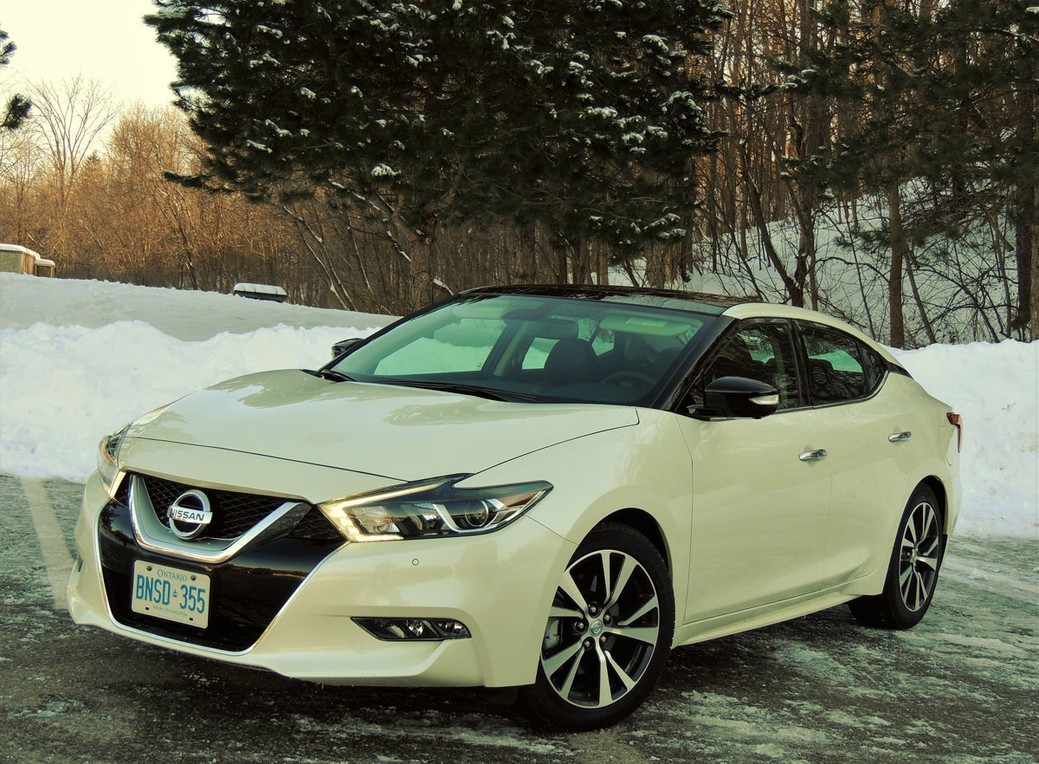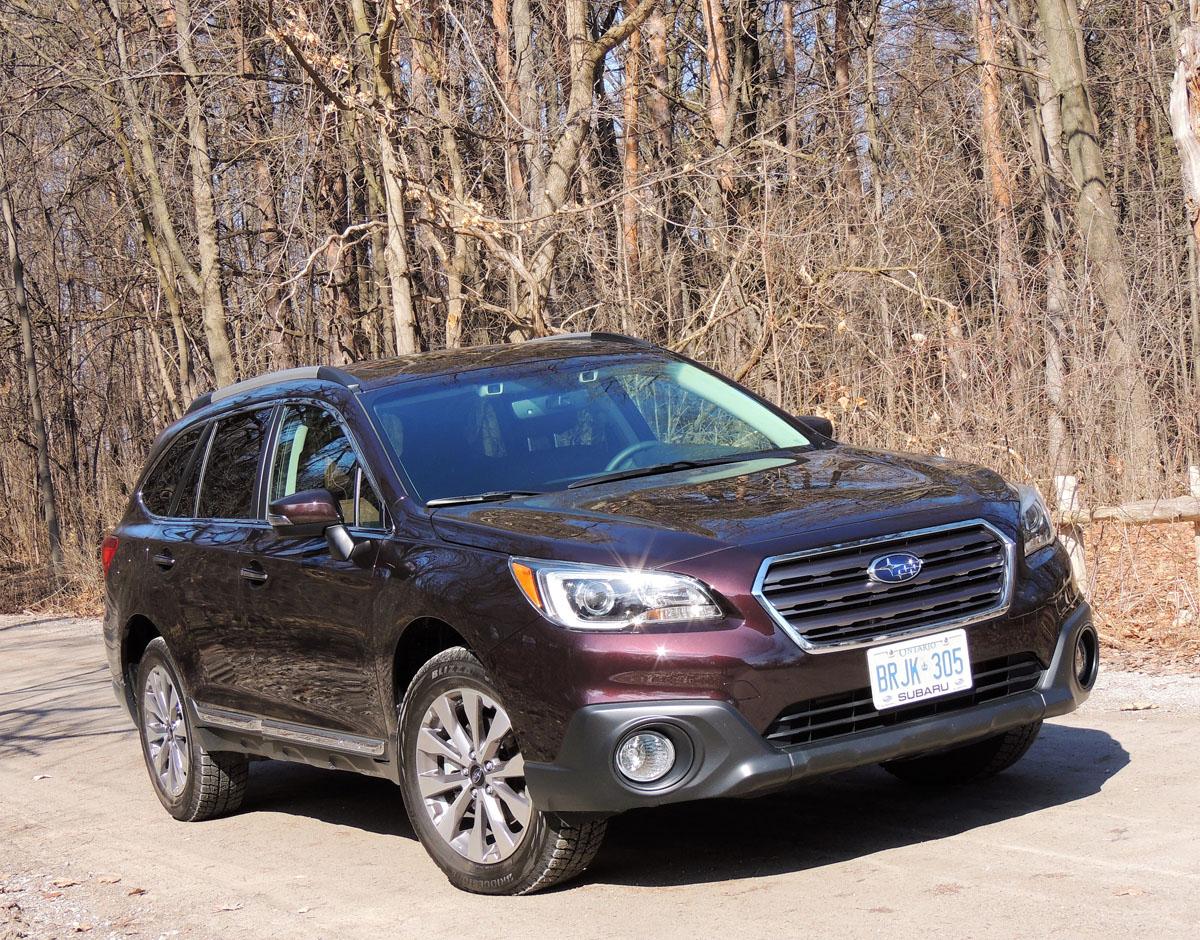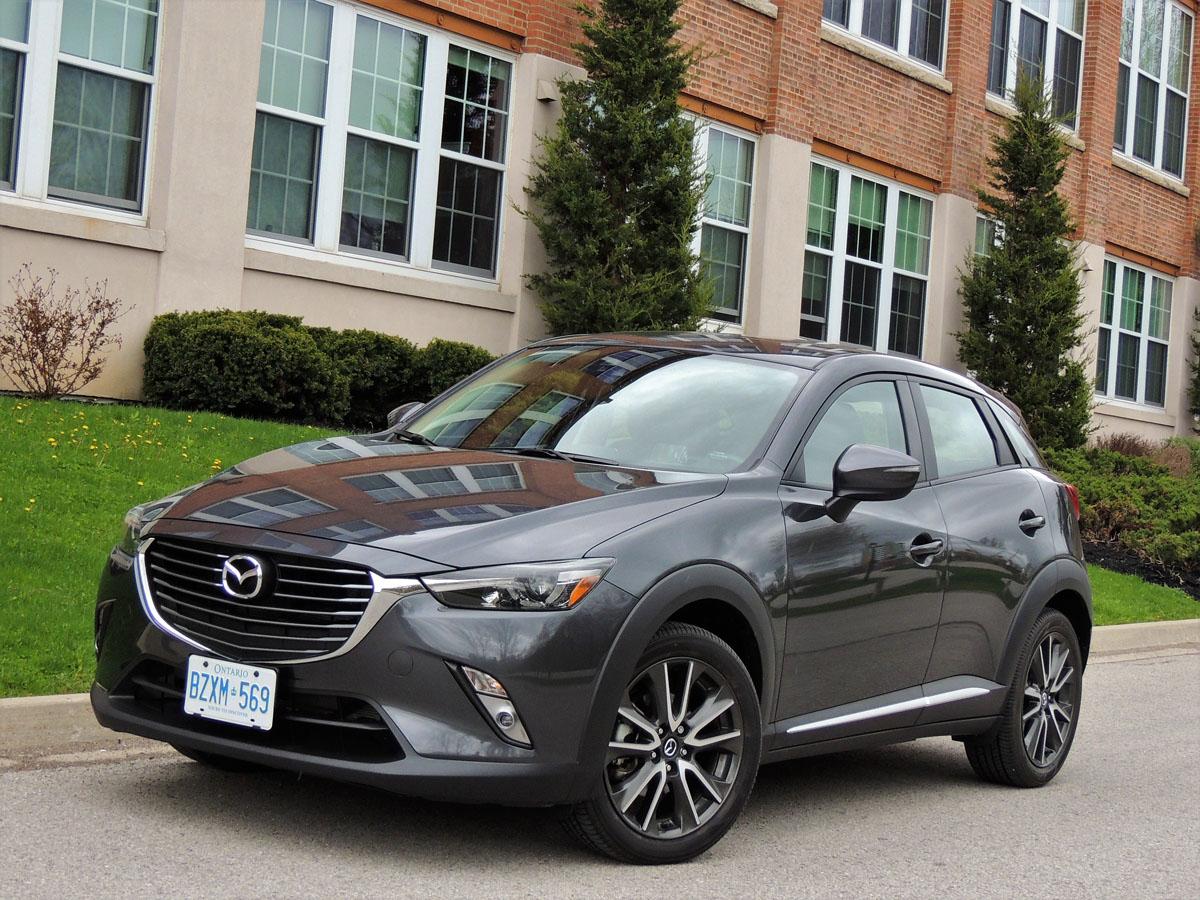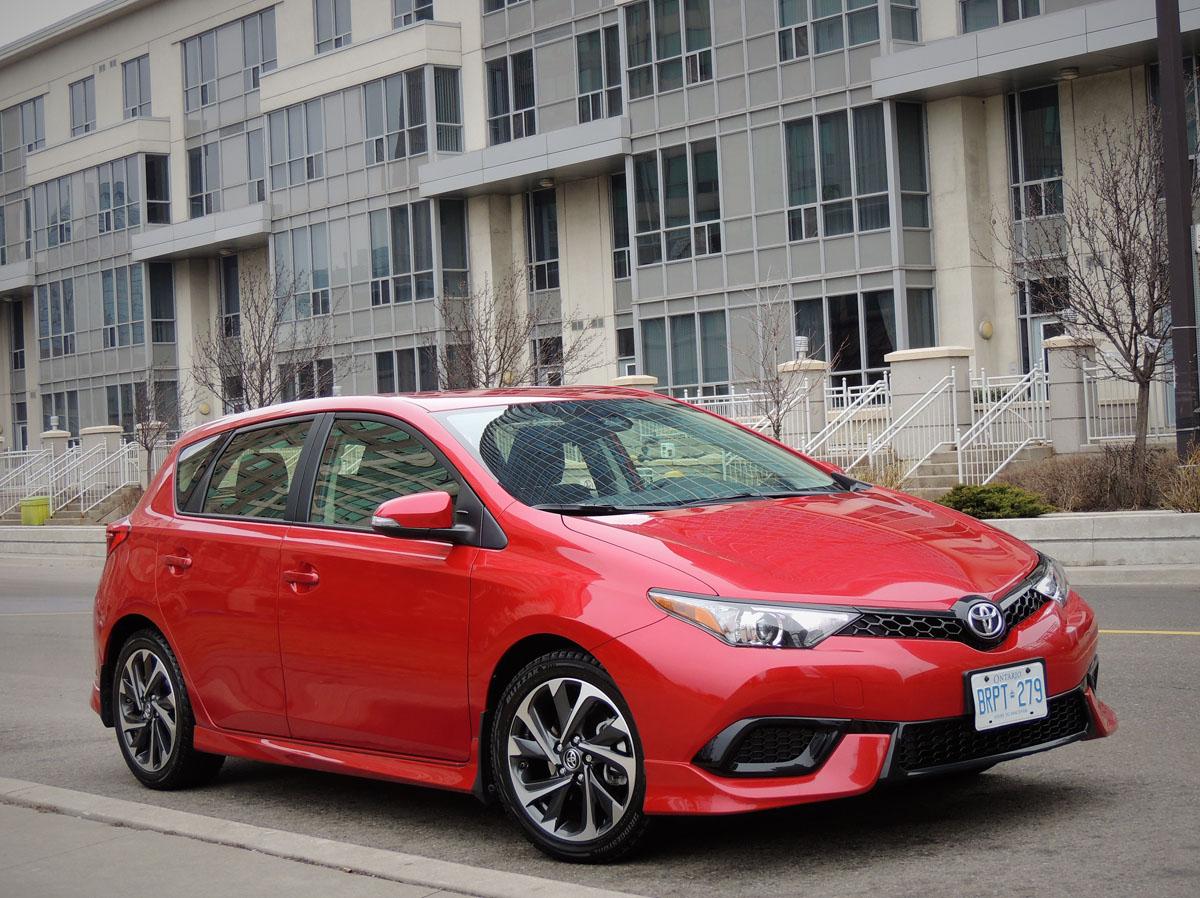
2017 iM is the Corolla that carries more
Photos by Neil Moore / Feature photo: The 2017 Toyota Corolla iM looks more stylish than previous compact hatchbacks – like Matrix – featuring a wedge profile, sharp creases and aero kit.
Unlike our neighbours to the south we Canadians love our hatchbacks.

Perhaps we’re a more practical lot. After all, small sedans aren’t as adept at swallowing loads of hockey gear as their hatchback counterparts – especially when you drop the rear seats.
For me, it’s also a matter of panache. Among compact and subcompact cars – Fiesta, Focus, Civic, Yaris, Mirage and Cruze, to name a few – the hatchback version would be my pick over the sedan every time.
Toyota Corolla, however, has been an exception.
Its five-door sibling, the Matrix, didn’t follow the above trend. This wallflower lacked the sportier, more dynamic shape of competitors like Mazda3, Golf and Focus, and finally left us in 2014.
A year later, a new compact hatch arrived under the Scion nameplate. The iM, known as the Auris in other markets, may not have been positioned as a Matrix replacement, but should have been.
Its crisp wedge profile, aero kit that visually lowers the vehicle, and 17-inch alloys pushed to the corners, created a refreshing change from its bland predecessor. Ditto for its honeycomb grille, flanked by eagle-eyed projector headlamps, that create a more aggressive first impression.
Well, as aggressive as the automaker would allow, keeping in mind that Toyota buyers of any stripe aren’t looking for “over-the-top.”
Months after launching the iM, Scion was deep-sixed.
Saying goodbye to the brand’s underpowered iQ microcar and uber-boxy xB was a no-brainer, as was moving iM into the Toyota lineup. Other than Scion’s FR-S (now a Toyota 86), this hatchback was their only fresh ride.
Toyota changed little about the iM during its badge swap, other than adding the ‘Safety Sense’ suite of tech that includes the pre-collision warning, emergency braking, lane departure alert and auto high beams. The iM also gains heated front seats as standard fare.

As a result, price has increased from $21,165 with six-speed manual and $21,990 with CVT to $22,540 and $23,375. Which may seem like a steep entry price, but Toyota has preserved Scion’s ‘monospec’ ways – you get a fully-dressed iM for the price.
Features include dual-zone climate control, leather-wrapped tilt/telescopic steering, backup camera, and six-speaker, seven-inch touchscreen infotainment with Aha Internet radio. I cranked the audio and found this system better than most in the segment.
Front sport buckets are upholstered in a grippy fabric, with seat heating controlled by a pair of tiny dials in a cubby. They’re a challenge to operate with gloves or frozen fingers, but once activated the elements thaw your backside quickly.
Also nice are the piano black accents on the centre stack and doors, and the high-contrast stitching in the steering wheel, shifter boot and other padded surfaces.
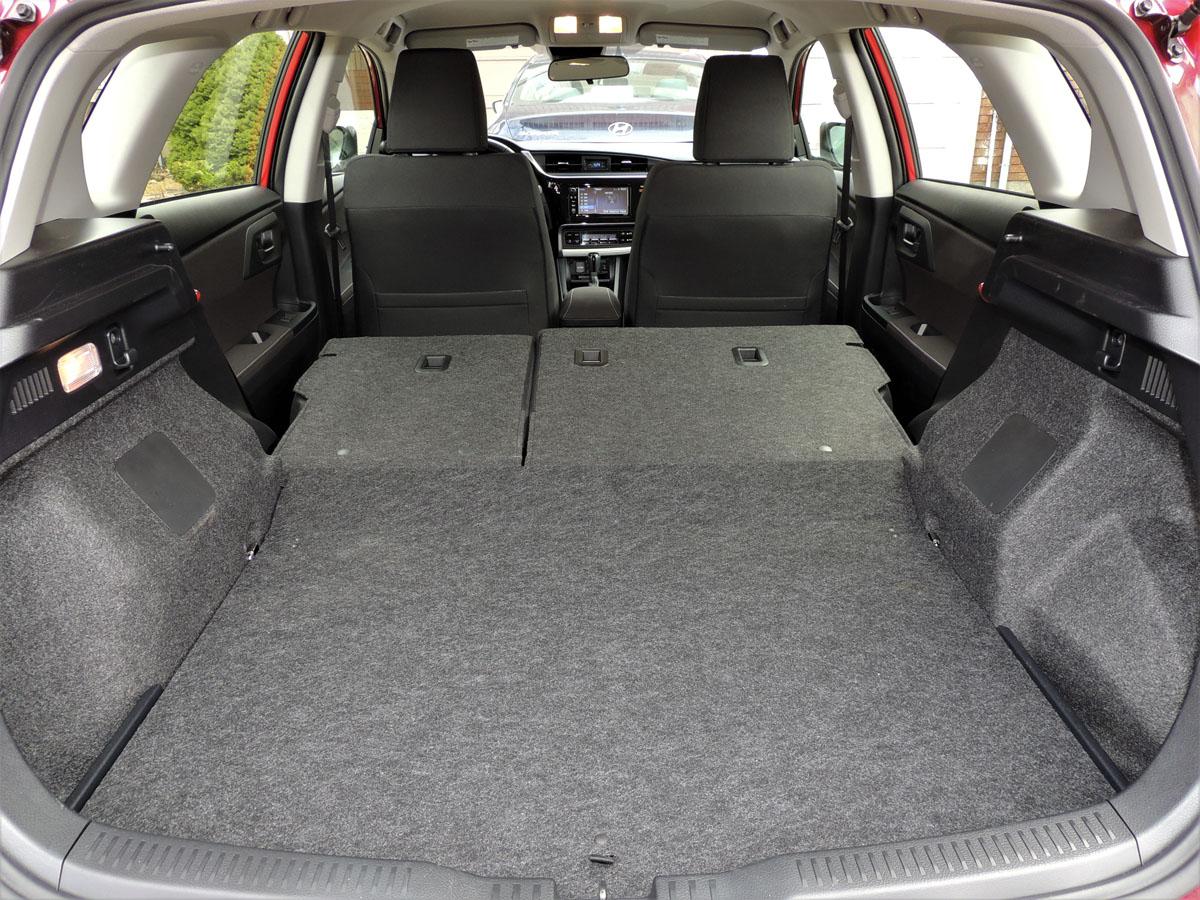
Back seats are generous, with decent head and leg room for two full-sized adults – three in a pinch. Drop the split-fold 60/40 bench, which folds nearly flat, and the 588-litre cargo hold grows large enough for a couple of mountain bikes or a large flat-screen TV.
Overall, the interior punches above entry level, which is to be expected at this price point. One that makes it difficult to compare apples to apples, say, when you’re cross-shopping competitors that start a couple of grand less, but top out in the mid- to high-twenties.
Where the exterior and interior score high marks, iM’s powertrain choice is merely adequate, and offers few surprises.
Both models get a 1.8-litre four cylinder that delivers 137 hp and 126 lb/ft of torque. My tester was equipped with the CVT.
I appreciate that Toyota only charges an extra $835 for this feature, as some automakers are close to double that. And this CVT doesn’t suffer from the ‘rubber band’ feel that plagued early units.
That being said, it is noisy under hard acceleration, despite sound deadening efforts that include acoustic windshield, foam insulation and floor silencer sheets. And acceleration is hardly neck-snapping – but then again, this is true for most competitors unless you drop the extra dough for a turbocharged Focus ST, Forte 5 or Golf GTI.
Hit the sport button, and things get even noisier. To its credit, this CVT holds the seven stepped shift points a little longer, and throttle response sharpens, but none of this turns the iM into a “hot hatch.”
And that’s fine with most Toyota buyers, especially those who might otherwise opt for a Corolla – currently the world’s top-selling car. They appreciate its brand values, and can now get a full helping in an even more practical package.

SNAPSHOT: 2017 Toyota Corolla iM
BODY STYLE: compact five-door hatchback
TRANSMISSION: front-engine, front-wheel-drive; six-speed manual or seven-step CVT as tested
ENGINE: DOHC 1.8-litre, 16-valve inline four-cylinder (137 hp and 126 lb/ft of torque)
FUEL ECONOMY: six-speed manual, 8.8/6.8/7.9L/100 km (city/highway/comb); CVT, 8.3/6.5/7.5L/100 (city/hwy/comb)
CARGO: 588 litres
PRICING: with 6-speed manual $22,540; with CVT $23,375. Does not include freight and taxes. See website for accessories and current dealer pricing.
WEBSITE: toyota.ca

